Related Research Articles

Abu Zubaydah is a Saudi Arabian Mujahid currently held by the U.S. in the Guantanamo Bay detention camp in Cuba. He is held under the authority of Authorization for Use of Military Force Against Terrorists (AUMF).

Khalid Sheikh Mohammed is an Islamist militant held by the United States at the Guantanamo Bay detention camp under terrorism-related charges. He was named as "the principal architect of the 9/11 attacks" in the 9/11 Commission Report.

Walid Muhammad Salih bin Mubarak bin Attash is a Yemeni prisoner held in extrajudicial detention at the United States' Guantanamo Bay detention camp.
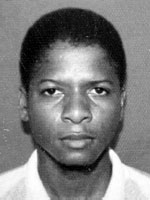
Ahmed Khalfan Ghailani is a Tanzanian conspirator of the al-Qaeda terrorist organization convicted for his role in the bombing of embassies in Kenya and Tanzania. He was indicted in the United States as a participant in the 1998 U.S. embassy bombings. He was on the FBI Most Wanted Terrorists list from its inception in October 2001. In 2004, he was captured and detained by Pakistani forces in a joint operation with the United States, and was held until June 9, 2009, at Guantanamo Bay detention camp; one of 14 Guantanamo detainees who had previously been held at secret locations abroad. According to The Washington Post, Ghailani told military officers he is contrite and claimed to be an exploited victim of al-Qaeda operatives.
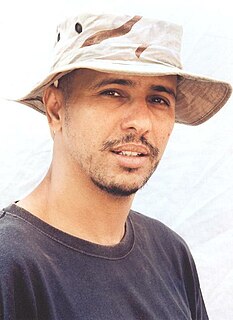
Mohamedou Ould Slahi is a Mauritanian citizen who was detained at Guantánamo Bay detention camp without charge from 2002 until his release on October 17, 2016.

Mustafa al-Hawsawi is a Saudi Arabian citizen. He is alleged to have acted as a key financial facilitator for the September 11 attacks in the United States.
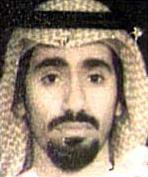
Abd al-Rahim al-Nashiri is a Saudi Arabian citizen alleged to be the mastermind of the bombing of USS Cole and other maritime terrorist attacks. He is alleged to have headed al-Qaeda operations in the Persian Gulf and the Gulf states prior to his capture in November 2002 by the CIA's Special Activities Division.
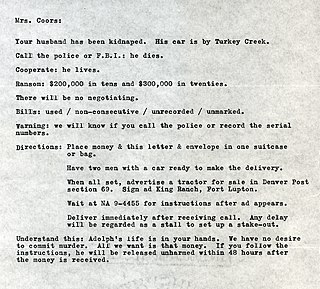
Extraordinary rendition is state-sponsored "forcible abduction in another jurisdiction and transfer to a third state". The phrase usually refers to the United States-led program of extraordinary rendition during the War on Terror, which had the purpose of circumventing the source country's laws on interrogation, detention, extradition and/or torture. Extraordinary rendition is a type of extraterritorial abduction, but not all extraterritorial abductions include transfer to a third country.
Extrajudicial prisoners of the United States, in the context of the early twenty-first century War on Terrorism, refers to foreign nationals the United States detains outside of the legal process required within United States legal jurisdiction. In this context, the U.S. government is maintaining torture centers, called black sites, operated by both known and secret intelligence agencies. Such black sites were later confirmed by reports from journalists, investigations, and from men who had been imprisoned and tortured there, and later released after being tortured until the CIA was comfortable they had done nothing wrong, and had nothing to hide.

Mohammed Saddiq Odeh is a Saudi-born al-Qaeda member, sentenced in October 2001 to life imprisonment for his parts in the US embassy bombings in Kenya and Tanzania on August 7, 1998. Odeh was convicted along with three co-conspirators: Mohamed Rashed Daoud Al-Owhali, Khalfan Khamis Mohamed and Wadih el Hage. Another defendant, Ali Mohamed, pleaded guilty the previous year. Another, Mahdouh Salim, was awaiting trial, and three additional defendants were fighting extradition in England.

Sharqawi Abdu Ali al-Hajj, also known as Riyadh the Facilitator, is a Yemeni alleged Al-Qaeda associate who is currently being held in the United States' Guantanamo Bay detention camps, in Cuba.
"Enhanced interrogation techniques" or "enhanced interrogation" is a euphemism for the program of systematic torture of detainees by the Central Intelligence Agency (CIA), the Defense Intelligence Agency (DIA) and various components of the U.S. Armed Forces at remote sites around the world, including Bagram, Guantanamo Bay, Abu Ghraib, and Bucharest authorized by officials of the George W. Bush administration. Methods used included beating, binding in contorted stress positions, hooding, subjection to deafening noise, sleep disruption, sleep deprivation to the point of hallucination, deprivation of food, drink, and medical care for wounds, as well as waterboarding, walling, sexual humiliation, subjection to extreme heat or extreme cold, and confinement in small coffin-like boxes. A Guantanamo inmate's drawings of some of these tortures, to which he himself was subjected, were published in The New York Times. Some of these techniques fall under the category known as "white torture". Several detainees endured medically unnecessary "rectal rehydration", "rectal fluid resuscitation", and "rectal feeding". In addition to brutalizing detainees, there were threats to their families such as threats to harm children, and threats to sexually abuse or to cut the throat of detainees' mothers.
Since 1991, CIA activities in Somalia have included funding warlords, extraordinary renditions and most recently operating black sites.
James Elmer Mitchell is an American psychologist and former member of the United States Air Force. From 2002, after his retirement from the military, to 2009, his company Mitchell Jessen and Associates received $81 million on contract from the CIA to carry out the interrogation and torture of detainees, euphemistically referred to as "enhanced interrogation techniques".

Abu Zubaydah is a Saudi citizen who helped manage the Khalden training camp in Afghanistan. Captured in Pakistan on March 28, 2002, he has since been held by the United States as an enemy combatant. Beginning in August 2002, Abu Zubaydah was the first prisoner to undergo "enhanced interrogation techniques." Since the Spanish Inquisition, these practices have been characterized as torture by many familiar with the techniques. There is disagreement among government sources as to how effective these techniques were; some officials contend that Abu Zubaydah gave his most valuable information before they were used; CIA lawyer John Rizzo said he gave more material afterward.

Gul Rahman was an Afghan man, suspected by the United States of being a militant, who was a victim of torture. He died in a secret CIA prison, or black site, located in northern Kabul, Afghanistan known as the Salt Pit. He had been captured October 29, 2002.

John Bruce Jessen is an American psychologist who, with James Elmer Mitchell, created the so-called "enhanced interrogation techniques" that were used in the interrogation and torture of CIA detainees. and outlined in the United States Senate Select Committee on Intelligence's report on CIA torture. In that report, he was mentioned under the pseudonym "Hammond Dunbar." His company, Mitchell Jessen and Associates, earned US$81 million for its work.
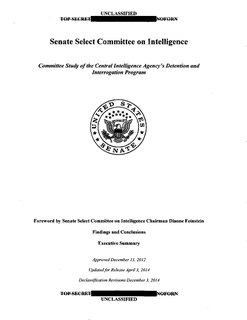
The Committee Study of the Central Intelligence Agency's Detention and Interrogation Program is a report compiled by the bipartisan United States Senate Select Committee on Intelligence (SSCI) about the Central Intelligence Agency (CIA)'s Detention and Interrogation Program and its use of torture during interrogation in U.S. government communiqués on detainees in CIA custody. The report covers CIA activities before, during, and after the "War on Terror". The initial report was approved on December 13, 2012, by a vote of 9–6, with seven Democrats, one Independent, and one Republican voting in favor of the report and six Republicans voting in opposition.
Mohamed Ahmed Ben Soud was held, and tortured, in the CIA's archipelago of black sites, where it tortured individuals.
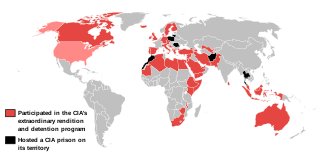
CIA black sites refer to the black sites that are controlled by the CIA and used by the U.S. government in its War on Terror to detain enemy combatants.
References
- 1 2 3 James Risen (2016-10-12). "After Torture, Ex-Detainee Is Still Captive of 'The Darkness'". New York Times . Dubai, United Arab Emirates . Retrieved 2016-10-12.
Mr. Salim was one of 39 men subjected to some of the C.I.A.'s most brutal techniques — beatings, hanging in chains, sleep deprivation and water dousing, which creates a sensation of drowning, even though interrogators had been denied permission to use that last tactic on him, according to a Senate Intelligence Committee investigation into the agency's classified interrogation program.
- 1 2 Harriet Alexander (2016-04-23). "Former CIA detainees to sue American contractors who designed torture programme". New York City: The Telegraph (UK) . Retrieved 2016-10-12.
Mr Salim, who is now back home in Tanzania, said he was held for five years and tortured. "You can't sleep, you can't eat, you can't smell," he told The Guardian. "Flashbacks come anytime, so much they make you crazy."
- ↑ Desmond Butler (2003-06-14). "5-Year Hunt Fails to Net Qaeda Suspect in Africa". New York Times . Retrieved 2016-10-12.
The man, who Kenyan officials say was wanted for involvement in the embassy bombings and is now in American custody, is Suleiman Abdalla Salim Hemed, known as Issa. Said to be a Yemeni in his mid-20s, Mr. Hemed is one of a number of suspected Qaeda members whose faces appear on illustrated playing cards being distributed by the American agents in Somalia.
- ↑ "Kenya Hands Over Al Qaeda Suspect to U.S. Officials: Authorities in Nairobi say he took part in the 1998 bombings of American embassies". Los Angeles Times . Nairobi, Kenya. 2003-03-27. Retrieved 2016-10-12.
- ↑ McLaughlin, Jenna (October 13, 2015). "Former U.S. Detainees Sue Psychologists Responsible For CIA Torture Program". Intercept. Retrieved March 30, 2016.
- ↑ Fink, Sheri (29 July 2017). "2 Psychologists in C.I.A. Interrogations Can Face Trial, Judge Rules". The New York Times . p. A18. Retrieved 29 July 2017.